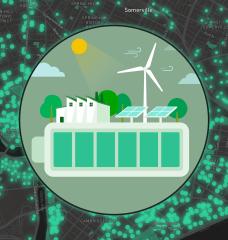
Driven by increasing volumes of goods moving through supply chains across the globe, demand for freight transportation is expected to triple over the next few years (1). If we continue shipping goods as we do today, freight emissions will surpass energy as the most carbon-intensive sector by 2050, doubling carbon emissions by 2050 (1,2).
Despite these grim predictions, there is a clear path forward for green freight. Using well-established efficiency techniques and existing/near-term green freight technologies, we can keep emissions at bay while still allowing businesses to grow. A rapid and widespread change of course is required to achieve this mission — and that change needs to be tracked and communicated using the de facto metric of the sustainability movement and the language of the Paris Agreement: carbon emissions.
Emissions accounting framework
This challenge has been embraced by the Global Logistics Emissions Council (GLEC), a group of companies, NGOs, green freight programs, and experts committed to tracking and reducing carbon emissions from freight transportation. Led by Smart Freight Centre (SFC), myself, Alan Lewis, and GLEC partners collaboratively developed and tested a carbon accounting method that works for shippers, carriers, and logistics service providers: the GLEC Framework.
Since it was released in 2016, a growing number of companies, including DHL, Maersk, Kühne + Nagel, DB Schenker, HP, PepsiCo, Dow, and Syngenta, have adopted the GLEC Framework to collect and share data on logistics carbon emissions.




